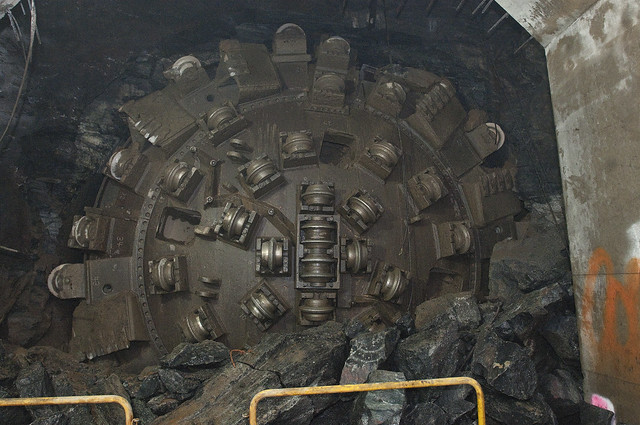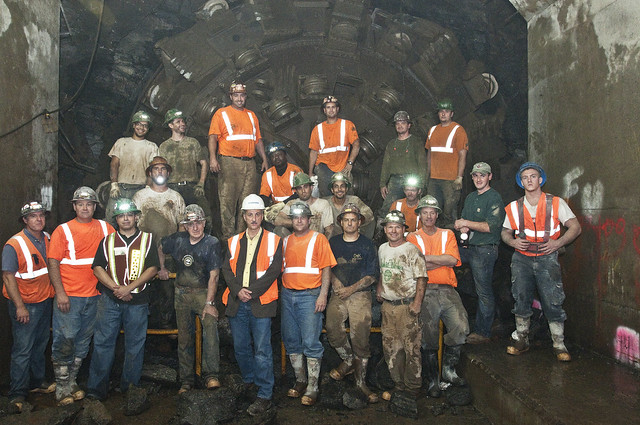
The latest plan for 34th Street will arrive in November.
It’s been over six months since 34th Street NIMBYs killed NYC DOT’s ambitious plan for a 34th Street transitway and equally as long since the agency announced modified plans for semi-dedicated bus lanes. Now those plans are coming to fruition, and DOT is eying a November roll-out for its so-called Select Bus Service along the 34th Street corridor.
As The Daily News reported today, instead of a dedicated transitway along 34th Street, we’ll get the M34A SBS, a BRT-lite route that will improve travel for all of one bus route in the city. The M34A will replace the M16, and it will be equipped with the same SBS features found along 1st and 2nd Aves. and Fordham Road: pre-board fare payment with proof-of-purhase; surveillance cameras to enforce bus-only lanes; three-door, low-floor buses; and eventually, signal prioritization.
These measures can’t replicate bus rapid transit. Rather, they are simply a start, but it’s tough to say if these efforts to speed up bus travel will go anywhere. Even after the city dumped the plans for a Transitway, residents are still complaining about curbside access and want DOT to carve out an exception to the bus-only lanes from 10 a.m. to 4 p.m. every weekday.
DOT has rightly refused. “Although we appreciate the concerns of the residents of the 34th Street block between Ninth and Tenth Avenues, the current curb configuration on 34th Street provides significant benefits to bus riders,” a spokesman said to DNAInfo. This is a battle over transit speed and street space that won’t end soon.

 Late last week, MTA honchos and various elected officials gathered underground at 63rd St. to celebrate the
Late last week, MTA honchos and various elected officials gathered underground at 63rd St. to celebrate the 















